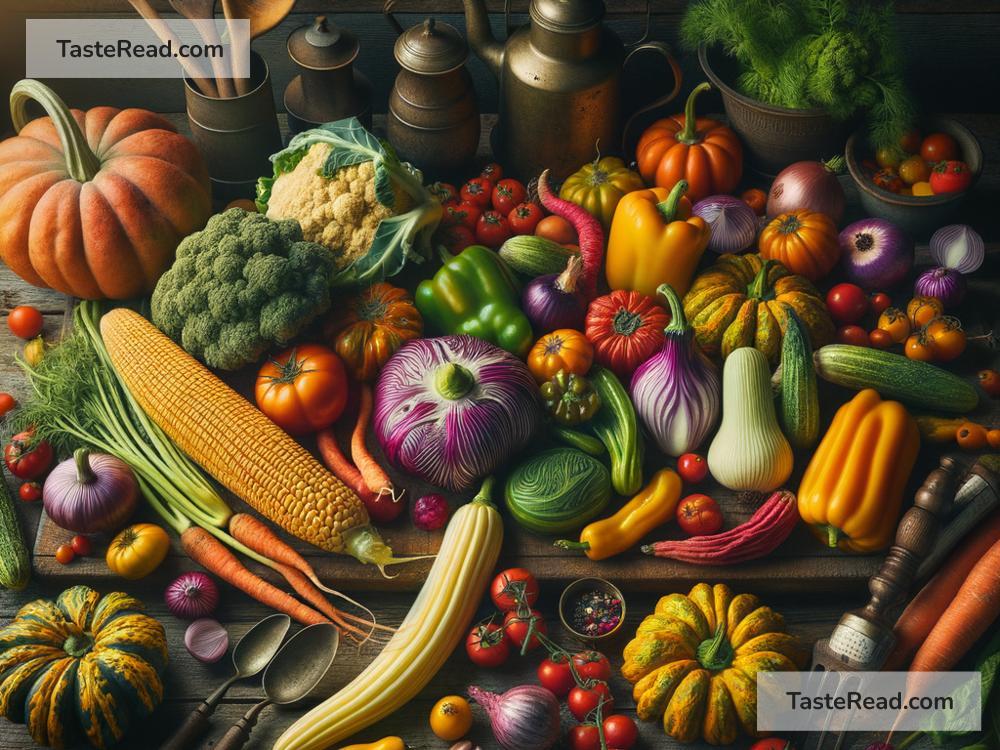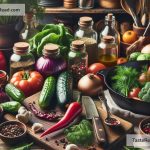Discovering the Magic of Cooking with Heirloom Vegetables
Cooking, for me, has always been about exploring – whether it’s trying out exotic recipes, experimenting with spices, or getting hands-on with different ingredients. My culinary journey took a fascinating turn when I stumbled upon the world of heirloom vegetables. Heirloom vegetables are those old varieties that have been grown for generations, handed down from gardener to gardener, often for more than 50 years. They are non-GMO and are known for their rich flavors and unique colors. Here’s the story of how I learned to cook with these treasures of the gardening world.
The Beginning: A Colorful Discovery
My introduction to heirloom vegetables was purely accidental. One day, while strolling through a local farmer’s market, I was captivated by the vibrant colors and unusual shapes of some vegetables. There were tomatoes that came in all colors – purple, yellow, even striped! Carrots weren’t just orange but also purple, red, and white. It was like seeing a rainbow on the earth. Curiosity piqued, I began speaking to the farmers, who explained that these were heirloom varieties, preserved through generations for their exceptional taste and nutritional value. Fascinated, I bought an assortment of these colorful curiosities to try my hand at cooking with them.
The Experiment Begins: A Chronicle of Trials and Errors
As someone who was accustomed to cooking with common vegetables, my first few attempts at cooking with heirlooms were admittedly a mixed bag. For instance, I learned that the beautiful stripy ‘Green Zebra’ tomatoes were tangier than their red cousins, adding an unexpected zing to my salads. The ‘Purple Dragon’ carrots, on the other hand, were sweeter and made my stir-fries visually stunning.
One memorable experiment involved an heirloom variety of squash called ‘Cushaw Green Striped’. Its sweet, nutty flavor was a game-changer in my pumpkin soup recipe. However, not every attempt was a success. The ‘Chioggia’ beet, with its candy-striped interior, was an aesthetic marvel but turned my salad into a soggy mess when I overcooked it the first time.
Learning Curve: Listening to the Vegetables
My journey wasn’t just about trial and error. It involved learning to ‘listen’ to the vegetables, understanding their unique flavors, textures, and cooking requirements. Heirloom vegetables, I found out, were not as uniform as their commercial counterparts. They demanded a certain respect and willingness to adapt.
I started small, incorporating heirloom varieties one at a time into familiar recipes to gauge their unique characteristics. I spoke more with the farmers, gleaning tips on how best to cook these vegetables to bring out their optimum flavors. Recipes didn’t always have to be elaborate. Sometimes, the heirlooms’ rich flavors meant doing less was more – like roasting ‘Brandywine’ tomatoes with just a hint of salt to appreciate their robust taste.
The Joy of Sharing: Heirlooms in My Kitchen
Cooking with heirloom vegetables transformed not just my meals but also the experience of sharing them. Friends and family were initially skeptical but soon became enthusiastic participants in my culinary experiments. Sunday dinners featured heirloom vegetable lasagnas, salads, and roasts. The diverse flavors and stories behind each variety sparked conversations and made meals more memorable.
Teaching my kids about heirlooms became an unexpected joy. Together, we marveled at the ‘Glass Gem Corn’, with its jewel-like kernels, and planted our own ‘Moon and Stars’ watermelon in the garden, observing its growth with excitement. Cooking with heirloom vegetables provided a gateway to conversations about biodiversity, the importance of preserving traditional crops, and respecting the time-honed wisdom of generations past.
Continuing the Heirloom Adventure
Learning to cook with heirloom vegetables has been a journey of discovery, filled with surprises, learning, and a lot of joy. It’s a testament to the rich tapestry of our agricultural heritage, a vibrant reminder of the diversity our planet has to offer.
For anyone curious about embarking on their own heirloom vegetable adventure, my advice is simple: start small, be open to learning, and let the vegetables guide you. Visit local farmer’s markets, talk to the growers, and bring home a piece of living history.
Cooking with heirloom vegetables not only adds color and flavor to your meals but also connects you to a larger story, one of resilience, tradition, and the simple joy of eating what the earth has offered us through generations. As for me, my journey with heirloom vegetables continues, one delicious, colorful meal at a time.


